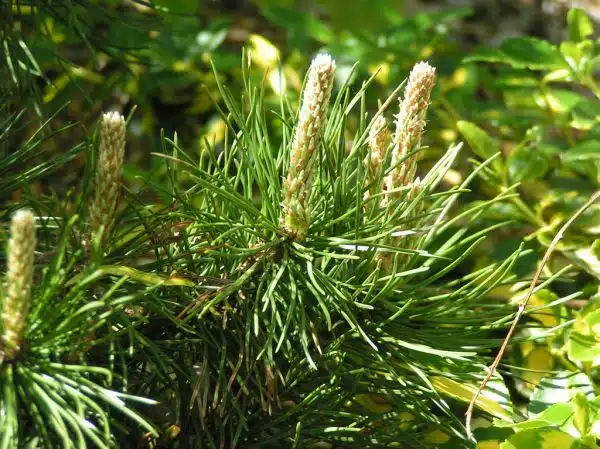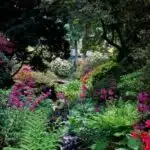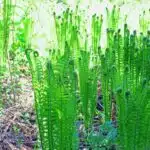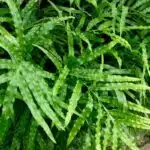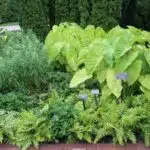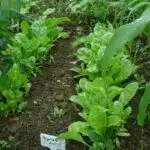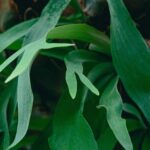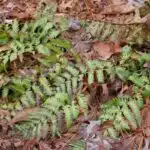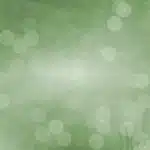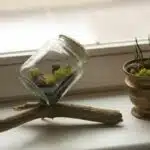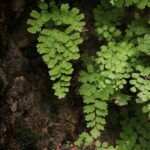Container gardening has become increasingly popular in recent years, especially among those who lack the outdoor space for a traditional garden. Fillers are an essential component of container gardens as they provide texture, color, and structure to the overall design. However, choosing the right filler plants can be overwhelming for novice gardeners or those with limited horticultural knowledge. In this article, we will explore some of the best filler plants for container gardens that not only add aesthetic value but also serve practical purposes such as repelling pests and attracting pollinators.
When it comes to selecting filler plants for container gardens, there are several factors to consider. The size of the container, amount of sunlight exposure, soil type and moisture levels are all critical components to take into account before making a decision. Additionally, it is important to choose plants that complement each other in terms of color and texture while also serving a specific function within the garden. By carefully selecting the right combination of filler plants for your container garden, you can create a stunning display that not only enhances your outdoor living space but also provides benefits such as fresh herbs or vegetables for your kitchen table or attracting beneficial insects to your yard.
Understanding The Role Of Fillers In Container Gardening
Container gardening is a popular way of growing plants for those who do not have enough space or yard for a traditional garden. One of the essential components to make container gardens successful is filler plants. Fillers, as the name suggests, fill in the gaps between the focal points and accent plants in container gardens. They play a crucial role in creating a balanced and visually appealing display.
Importance-wise, filler plants serve several purposes in container gardening. Firstly, they provide a base that supports the taller and more prominent plants. This support helps to prevent top-heavy containers from tipping over or getting damaged by strong winds. Secondly, fillers add texture, color, and volume to container gardens, making them look fuller and complete. Lastly, they can also serve as functional plants that repel pests or attract beneficial insects.
There are several types of filler plants available for container gardens. Some common examples include herbs like oregano or thyme, groundcovers like sedums or creeping jenny, annuals like petunias or marigolds, and succulents like echeverias or jade plants. The choice of filler plant depends on the desired look of the container garden and its location – whether it receives full sun or partial shade. In the next section, we will discuss some factors to consider when choosing filler plants for container gardens to help you narrow down your options effectively.
Factors To Consider When Choosing Filler Plants
Understanding the Role of Fillers in Container Gardening is essential before choosing the right filler plants. In container gardening, fillers are used to complement and enhance the focal point or thriller plants. They add texture, color, and volume to the container, making it look fuller and more attractive. The role of fillers is crucial in creating a balanced and harmonious container garden.
When choosing filler plants for your container garden, several factors must be considered. The first factor is the container size. The size of the container determines how many plants can fit inside it. A large container can accommodate several filler plants, while a small one may only have room for one or two. Consider the height and width of your chosen fillers as well to ensure they won’t overcrowd other plants in your container.
Plant combinations are also an important consideration when selecting filler plants for your container garden. Choose fillers that complement your focal point plant in terms of color, texture, and growth habit. For example, if you have a tall spiky thriller plant with narrow leaves, choose a filler with round or broad leaves such as coleus or begonia to create a contrast in texture. Remember to choose sun-loving or shade-loving fillers based on your location’s lighting conditions.
Transitioning into the subsequent section about ‘sun-loving fillers for containers,’ it’s essential to know that not all filler plants thrive under full sun exposure. Choosing sun-loving fillers will ensure that they grow healthy and lush even under intense sunlight conditions but always remember that different sun requirements should be taken into account when pairing them with other plants in one pot/container.
Sun-Loving Fillers For Containers
Like the flowers that bloom in a well-tended garden, container gardens are a thing of beauty. Container garden design is an art that requires careful consideration of space, soil, and plant varieties. When it comes to choosing plants for container gardens, fillers play a crucial role in creating a lush and vibrant display. Sun-loving fillers are particularly important for containers placed in full sun or areas with high heat exposure.
Here are four sun-loving fillers that can thrive in container gardens:
Petunias: These colorful annuals offer a wide range of colors and patterns and can add texture to any container garden design.
Marigolds: These hardy annuals are drought-resistant and can help deter pests from other plants in the container garden.
Zinnias: These vibrant annuals come in a variety of colors and sizes, making them perfect for adding height and dimension to your container garden.
Lantana: This heat-tolerant perennial offers clusters of small flowers that attract pollinators while adding pops of color to your container garden.
Proper container garden maintenance is key to ensuring the success of your sun-loving fillers. Make sure to water and fertilize regularly, deadhead spent blooms, and keep an eye out for pests or diseases that could harm your plants.
Next up, let’s explore shade-loving fillers for containers. With the right combination of plants, you can create a stunning display no matter how much sunlight your container gets!
Shade-Loving Fillers For Containers
Moving on to container garden design for shade-loving fillers, it is important to consider the different types of plants that thrive in low light conditions. As with sun-loving fillers, choosing plants that are low maintenance will save you time and effort in caring for your container garden. Some good options for shade-loving fillers include ferns, hostas, and impatiens.
Ferns are an excellent choice for filling up space in a container garden as they have a lush and leafy appearance. They come in many different varieties and can grow well in containers with moist soil. Hostas are another option that provides a lot of foliage and can tolerate shade well. They also come in different sizes and colors, making them great for adding variety to your container garden design. Impatiens are a flowering plant that thrives in shady conditions, producing bright blooms that add color to any container garden.
When designing a container garden with shade-loving fillers, it’s important to consider the amount of sunlight that each plant receives. Some plants may need more light than others to thrive, so placing them strategically within the container is essential. Additionally, ensuring proper drainage and using high-quality potting soil will help your filler plants grow healthy and strong.
As we move forward into discussing filler plants for moist soils, keep in mind the importance of choosing low maintenance options that suit the specific growing conditions of your container garden. By considering these factors when selecting your plants, you can create a beautiful and thriving container garden design that brings joy to both yourself and those who see it.
Filler Plants For Moist Soils
Aquatic plants are a popular choice for moist soils, as they require little to no maintenance and can provide a stunning addition to a container garden. Ferns are a timeless classic for moist soils due to their lush green leaves and abundance of texture. Sedges are a great option for moist soils, as they provide a low maintenance, yet aesthetically pleasing addition to a container garden. Aquatic plants are a great choice for adding movement and life to a container garden. Ferns are extremely versatile and can be used to provide a natural, exotic feel to a container garden. Sedges add a unique texture to a container garden and can be used to create a unique and eye-catching display.
Aquatic Plants
When it comes to creating container gardens, there is no doubt that there are a plethora of options for filler plants. However, if you are looking for plants to thrive in moist soils and add a touch of serenity to your garden, aquatic plant varieties are worth considering. Container water gardens are becoming increasingly popular among garden enthusiasts as they provide a unique opportunity to incorporate aquatic plants into small spaces.
Several aquatic plant varieties can be grown in containers, including water lilies, lotus, and water hyacinths. Water lilies are perhaps the most common choice for container water gardens due to their striking beauty and ability to grow well in small spaces. Lotus plants also make excellent choices as they produce lovely blooms that add an exotic touch to any garden. Water hyacinths are another great option as they help filter impurities out of the water and prevent algae growth.
As with any other type of plant, it is important to choose the right cultivar for your specific growing conditions. When selecting aquatic plant varieties for your container water garden, consider factors such as light requirements, size at maturity, and temperature tolerance levels. With proper care and attention, these plants will flourish in your container garden and add a soothing element that is sure to delight both you and anyone who visits your space.
Ferns
Moving on to another great option for filler plants in moist soils, ferns are a popular choice due to their versatility and ease of care. There are numerous varieties of ferns that can thrive in containers, making them an ideal choice for small spaces. These plants offer a delicate and graceful touch to any garden with their lush and verdant foliage.
Fern care is relatively simple, as they require moist soil and indirect light. They also prefer cooler temperatures, making them an excellent choice for shaded areas. When selecting fern varieties for your container garden, consider factors such as size at maturity and growth habit. Some popular choices include Boston ferns, maidenhair ferns, and bird’s nest ferns.
In conclusion, if you are looking for a low-maintenance filler plant for your container garden that adds a touch of elegance and grace, then ferns are worth considering. With the right care and attention, these plants will flourish in your garden space while providing a calming atmosphere that is sure to delight both you and your visitors.
Sedges
Another viable option for filler plants in moist soils is sedges. These plants are known for their grass-like appearance and are an excellent choice for shaded areas. Sedges, unlike other plants, thrive in wet soil conditions and can handle standing water.
There are several varieties of sedges that can be grown in containers, making them an ideal choice for small spaces. Some popular choices include the evergreen Carex morrowii ‘Ice Dance,’ which grows to a height of about 10 inches, and the variegated Carex oshimensis ‘Evergold,’ which reaches a height of about 12 inches.
When selecting sedges for your container garden, it is essential to consider factors such as size at maturity and growth habit. Most sedges prefer cooler temperatures, indirect light, and moist soil conditions. Proper care will ensure that these plants will thrive in your garden space while providing a calming atmosphere that is sure to delight both you and your visitors.
Filler Plants For Dry Soils
If you live in a region that experiences dry spells or droughts, it’s essential to choose the right filler plants for your container garden. Water wise fillers are the perfect solution for ensuring your containers look fantastic while conserving water. Drought tolerant fillers can thrive in harsh conditions and help keep your other plants healthy by preventing soil erosion.
When selecting filler plants for dry soils, consider those with deep root systems that can access moisture from lower soil layers. Succulents, such as sedums and sempervivums, are excellent choices as they store water in their leaves and stems. Other options include lavender, thyme, and sage – all of which have aromatic qualities that add fragrance to your garden.
If you’re looking for a more colorful option, try planting zinnias or marigolds. These annual flowers not only add beauty to your garden but can also attract pollinators like bees and butterflies. When combined with water wise fillers like succulents, these vibrant blooms can create a stunning display in any container garden. So why not give them a try?
Incorporating drought tolerant fillers into your container garden is a smart choice that benefits both you and the environment. Not only do they require less maintenance, but they also conserve water while adding color and texture to your space. In the next section, we’ll explore how you can use certain filler plants to repel pests naturally – another way of keeping your garden thriving without using harsh chemicals.
Repelling Pests With Filler Plants
Natural pest repellent plants are a great addition to any container garden. Companion planting, or planting two or more plant species that benefit each other when grown together, is an effective way to repel pests naturally. For example, marigolds emit a scent that deters pests like aphids, whiteflies, and nematodes from attacking neighboring plants.
Another natural pest repellent plant is the chrysanthemum. Chrysanthemums contain pyrethrum, which is commonly used in insecticides. However, growing chrysanthemums in your container garden can help deter pests like ants, roaches, ticks, and fleas without the use of harmful chemicals.
Lastly, the lavender plant is another natural pest repellent option for container gardens. Its strong aroma repels mosquitoes, flies and moths while also attracting pollinators like bees and butterflies. Planting lavender with other companion plants can create a beautiful and functional garden space that serves both aesthetic and practical purposes.
By incorporating natural pest repellent plants into your container garden through companion planting techniques such as these examples mentioned above, you can reduce the need for harmful pesticides while still keeping your garden healthy and free from pests. In the subsequent section, we will discuss how certain filler plants can attract pollinators naturally to further enhance the health of your container garden ecosystem.
Attracting Pollinators With Filler Plants
Pollinators play a crucial role in the reproduction of many plants, making them an important consideration for gardeners. Filler plants are an excellent way to attract pollinators to your container garden. Pollinator friendly species include herbs such as basil, mint, and lavender, as well as flowers like marigolds, zinnias, and cosmos.
Incorporating pollinator friendly filler plants not only benefits the environment but also enhances the design of your container garden. These plants can add color and texture to complement other plants in the design. When selecting pollinator friendly species, it is important to consider their growth habits and compatibility with other plants in the container. For example, tall plants should be placed towards the center or back of a container while shorter ones should be positioned towards the front or edge.
Container garden design that incorporates pollinator friendly filler plants can create a beautiful and beneficial addition to any space. Consider using complementary colors and textures in your design for an even more visually appealing look that will attract pollinators all season long. In the next section, we will explore how you can use complementary colors and textures to create stunning container gardens that will not only beautify your space but also benefit the environment.
Complementary Colors And Textures In Container Gardens
Transition: Moving on from attracting pollinators, selecting the right filler plants can make all the difference in creating a beautiful and functional container garden. Using foliage combinations and selecting contrasting textures can add depth and interest to your plant arrangement.
When it comes to selecting filler plants for container gardens, there are a variety of options available. Here are three types of filler plants that not only look stunning but also serve practical benefits in your garden:
Spiller Plants – These plants drape over the edges of containers, softening the appearance and adding dimension to your arrangement. Some great options for spiller plants include trailing petunias, ivy, or sweet potato vine.
Foliage Plants – Adding foliage plants to your container garden provides texture and color variation. Consider adding ferns or ornamental grasses to create contrast against flowering plants.
Edible Filler Plants – Not only do edible filler plants like herbs or lettuce look great in container gardens, they also provide a practical use by providing fresh herbs or produce for cooking.
Using these three types of filler plants in combination can create a visually appealing and functional container garden that will thrive throughout the season.
In addition to their aesthetic appeal, filler plants also provide practical benefits in container gardening. They help retain moisture in soil and protect roots from extreme temperatures. Furthermore, certain varieties of filler plants like marigolds can act as natural pest deterrents, keeping harmful insects at bay without resorting to chemicals.
Transition: With an understanding of how important selecting the right filler plants is for your container garden’s success, let’s explore complementary colors and textures next.
Practical Benefits Of Filler Plants In Container Gardens
Benefits of Filler Plants in Container Gardens
Filler plants are an essential component of container gardens, providing numerous benefits to the overall beauty and health of the garden. One of the primary benefits of using filler plants is their ability to provide depth and dimensionality to the garden. By placing them strategically around taller plants or in empty spaces, they can help create a more dynamic and visually interesting garden.
Another key benefit of filler plants is their ability to improve soil health. Many filler plants, such as clover or vetch, are known for their nitrogen-fixing properties. This means that they can help convert atmospheric nitrogen into a form that is usable by other plants in the garden, thereby improving overall soil fertility.
In addition to their aesthetic and functional benefits, filler plants can also be used to attract beneficial insects such as bees and butterflies to the garden. By choosing specific types of filler plants that are known to attract these pollinators, gardeners can improve both the yield and quality of their crops while also supporting local biodiversity. Proper placement is vital for maximizing these benefits – placing filler plants near flowering crops or along borders can help ensure that pollinators are consistently drawn to the garden.
In summary, filler plants offer numerous practical benefits when used in container gardens. From improving soil health to attracting beneficial insects, these versatile plants are an essential tool for any gardener looking to create a beautiful and healthy outdoor space. By carefully considering placement and selecting appropriate varieties based on your specific needs, you can take full advantage of all that filler plants have to offer.
Conclusion
The world of container gardening is vast and intricate, with every element playing a significant role in the overall aesthetics and functionality of the garden. Among these elements, filler plants are often overlooked but play a crucial role in enhancing the beauty and practicality of container gardens. Understanding the factors that make a good filler plant, such as sun exposure, soil moisture levels, pest repelling properties, and pollinator attraction abilities, can help you choose the perfect plant for your container garden.
When it comes to sun-loving fillers for containers, options like verbena, petunias, and marigolds can add vibrant colors and textures while thriving in full sunlight. For shade-loving containers, ferns, hostas, and impatiens are excellent choices that add lush greenery to any space. Filler plants like mint or basil not only add fragrant aromas but also keep pests at bay while attracting beneficial insects like bees and butterflies. Combining complementary colors and textures can create an eye-catching display that adds depth to any container garden.
Ironically enough, despite their importance in container gardening, filler plants often go unnoticed due to their subtle presence. However, they provide practical benefits such as retaining moisture levels in soil while acting as natural weed barriers. Additionally, they create an aesthetically pleasing display by filling empty spaces between larger focal plants. Therefore, choosing the right filler plant is essential to enhance both the beauty and functionality of your container garden. By considering all factors such as sun exposure levels or pest repelling properties when selecting filler plants for your container garden will allow you to make informed decisions that improve both its productivity and appearance.
Image Credits
- “Plant” by Dave Stokes (featured)

